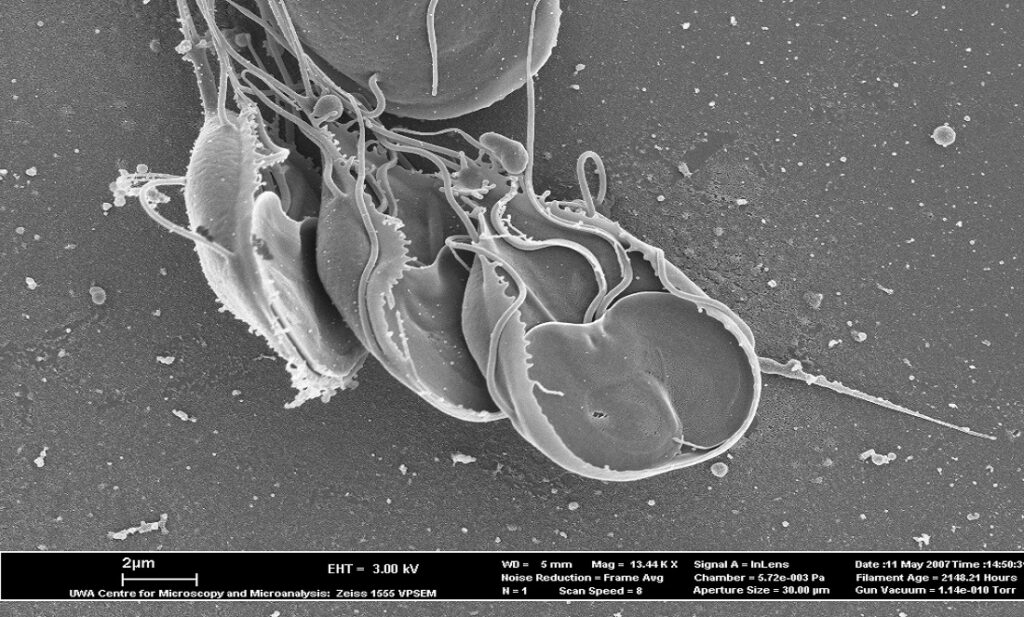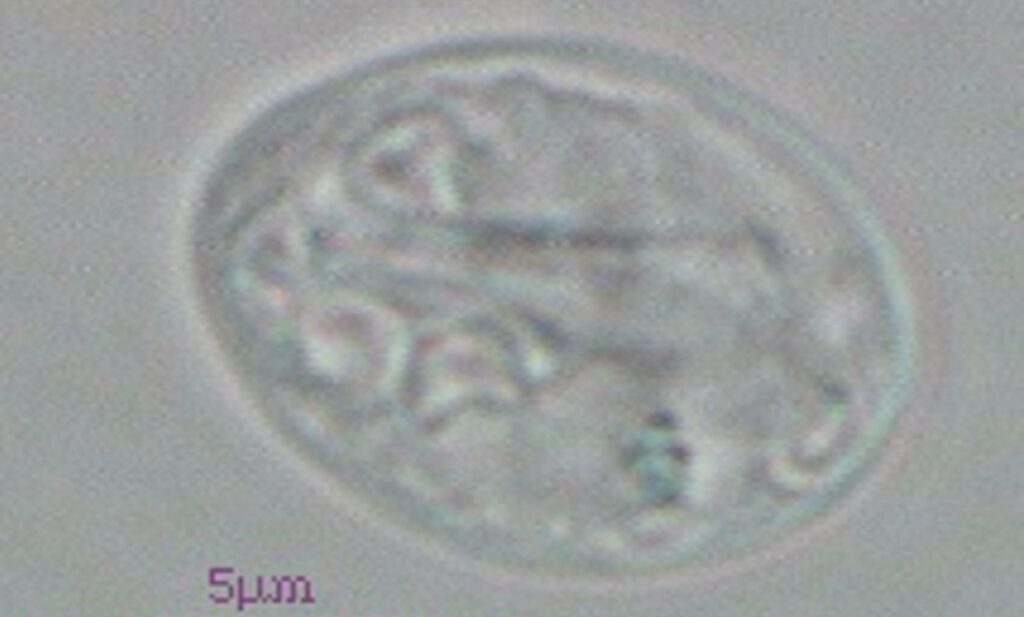Giardia is the most common intestinal parasite found in domestic dogs.
Some strains can infect people and cause a stomach infection called giardiasis.
Symptoms include diarrhoea, stomach cramps, nausea, fatigue, bloating and appetite loss.
They can last for months.
The parasite prevents normal nutrient absorption, and long-term infection can cause malnutrition.
People catch Giardia through contact with infected cysts in dog poo or on the animal’s coat.
There are more than 700 cases each year, according to the WA Country Health Service.
Murdoch University Emeritus Parasitology Professor Andrew Thompson says it’s more widespread.
“There are a lot more cases that are not notified,” he says.
“Most experts would say that at any one time about 5% of the population would have Giardia.
“More than half of all cases involve infants and children under the age of five.”
Andy says children from remote Aboriginal communities in the Kimberley have higher infection rates than other areas of WA.
The prevalence is thought to be due to infected dogs, poor living conditions and low hygiene levels.
MAPPING PROTEIN FINGERPRINTS
Identifying Giardia is tricky because the strains look the same under the microscope.
Vets can help prevent the spread between pooches and people if they could tell the strains apart.
Murdoch Uni and Perth life sciences company Proteomics International Laboratories Ltd (PILL) have joined forces to attempt this.
Researchers are mapping Giardia samples using a method called Promarker.
Andy says Murdoch Uni has one of the world’s largest collections of Giardia samples.
The samples were cryopreserved or frozen.
Promarker involves matching sequences of DNA and proteins to discover biomarkers or protein ‘fingerprints’.
Promarker helped develop a test for diabetic kidney disease, PILL managing director Dr Richard Lipscombe says.
The test is being commercialised in Central America and China.
PILL are also using Promarker to investigate biomarkers associated with endometriosis and mesothelioma.
COMMERCIAL VIABILITY
Murdoch University and PILL have done a proof-of-concept (or feasibility) study for a commercial test for Giardia with a US veterinary company.
Andrew says it’s a significant step closer to a simple test any pathology lab could perform.
“There’s a real commercial market out there for such a test,” he says.
The project has been extended and received a $45,000 grant from the Department of Industry, Innovation and Science for two new researchers.
Andrew hopes they could deliver results within 12 months.











